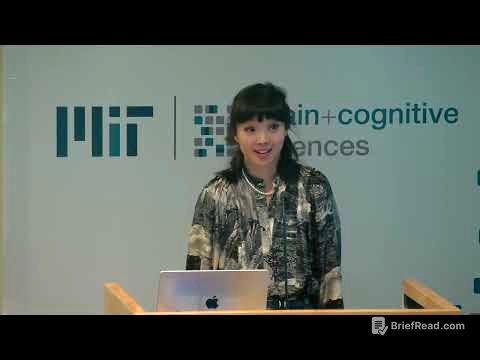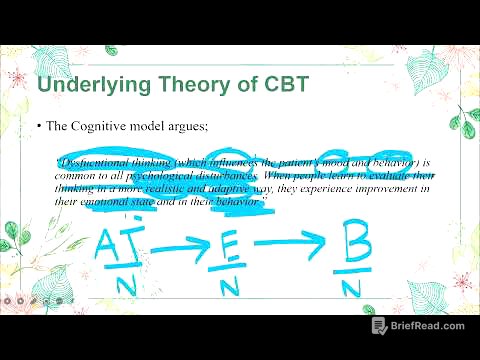TLDR;
The video discusses brain plasticity, the brain's ability to reorganize itself by forming new neural connections throughout life. It explains how the brain prunes unnecessary information to avoid overload and how modern lifestyles can hinder brain plasticity. The video also provides a simple test to switch from thinking mode to focused mode and suggests ways to promote brain plasticity through healthy stress.
- Brain plasticity allows the brain to adapt and strengthen with use, but deteriorates without it.
- The brain filters unimportant information to prevent overload, but excessive "thinking mode" can impair focus.
- Modern conveniences reduce the need for active brain use, weakening cognitive functions.
- Simple exercises and introducing novel activities can stimulate the brain and promote plasticity.
Introduction to Brain Function and Memory Deletion [0:02]
The video starts by addressing the common experience of forgetfulness and absent-mindedness. It suggests that these instances might indicate the brain's process of deleting unnecessary memories. The speaker explains that our brains are designed to eliminate information when we are not actively engaged, implying a mechanism for prioritizing and managing cognitive load.
Brain Plasticity and Rewiring [0:38]
The video challenges the outdated belief that brain cells remain static after creation. It references research by Dr. Michael Merzenich, highlighting that the brain constantly rewires connections based on experiences and learning. The speaker uses the example of a boy who recovered motor and speech abilities after losing part of his brain due to surgery, illustrating the brain's capacity to adapt and reassign functions. This adaptability is referred to as brain plasticity, emphasizing that the brain strengthens with use and deteriorates without it.
Thinking Mode and Information Overload [1:45]
The video explores what would happen if we remembered everything. It explains that the brain activates a "thinking mode" when not focused, filtering out unimportant information to prevent overload. Trivial short-term memories are relegated to areas where they don't need to be remembered. From an evolutionary perspective, this is an energy-efficient way to file away memories that don't pose a threat to survival. Psychologically, this mode helps create a sense of identity by combining past memories.
The Impact of Excessive Thinking Mode [2:51]
The video cautions against excessive "thinking mode," which can interfere with "focus mode," leading to concentration loss and forgetfulness. Focus mode is mainly activated when we work, plan, and act. The speaker notes that this issue is linked to aging, as deterioration of white matter and the prefrontal cortex makes switching between modes difficult.
Modern Society's Impact on Brain Plasticity [3:41]
The video argues that modern society weakens brain plasticity. The speaker contrasts the active spatial reasoning required before the advent of navigation systems with the passive following of instructions today. A study on London taxi drivers is mentioned, which found that memorizing directions develops the hippocampus, the area of the brain responsible for spatial memory. The speaker concludes that relying on convenience weakens unused brain functions like memory, concentration, and problem-solving skills.
Simple Test to Switch Brain Modes [4:29]
The video introduces a simple test to switch from "thinking mode" to "focused mode." This involves identifying five things you can see, four sensations you can feel, three sounds you can hear, two smells you can smell, and one thing you can taste. This exercise helps block anxious or complex thoughts by focusing on immediate sensations, reducing the brain's burden.
Promoting Brain Plasticity Through Healthy Stress [5:47]
The video suggests ways to aid brain plasticity by providing healthy stress, referred to as "eustress" in psychology. Eustress promotes BDNF, which helps the brain focus and supports the growth of brain neurons, thereby increasing plasticity. Simple activities like taking a new route, brushing teeth with the non-dominant hand, or watching a video on an unfamiliar topic can stimulate the brain.
Conclusion: Protecting Brain Function [6:23]
The video concludes by encouraging viewers to protect their brains from becoming too comfortable in automatic mode. It emphasizes that even small changes can make a difference, as the brain has an amazing capacity for flexibility, learning, and change, regardless of age or circumstances.









